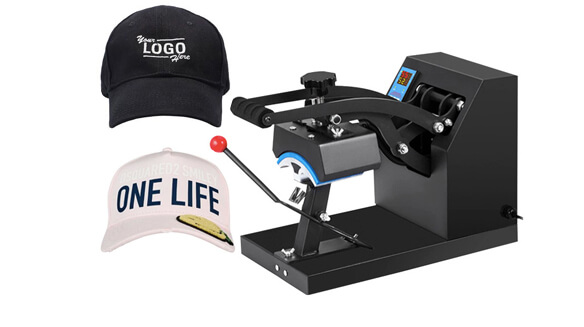Pick the Best Needle for Hat Embroidery: Expert Guide

Introduction
Choosing the ideal needle size for hat embroidery isn’t always straightforward. It often depends on the fabric’s nature and the thread’s thickness.
For a range of hat fabrics, a 75/11 or 80/12 needle is appropriate. However, for denser materials or thicker threads, you might need a size 90/14 needle. Dive deeper to identify the optimal needle size tailored for your embroidery endeavor.
What Is Needle Size And How Does It Affect Embroidery?
In embroidery, the needle’s diameter, or size, impacts the hole it makes in the fabric and how it works with the thread. The right needle ensures impeccable embroidery results.
Using too large a needle can harm the fabric, while a tiny needle might cause thread breaks or fabric wrinkles. Stitch appearance and the type of thread can change based on the needle size.
Choose your needle size based on the fabric’s nature, stitch intensity, and the thread’s thickness.
Take Organ needles as an example. They are available in five sizes: 90/14, 80/12, 75/11, 70/10, and 65/9. The number on the left is European size, and the one on the right is American. In the European sizing, the number represents the blade’s diameter. So, 65 stands for 0.65mm.
To delve deeper into needle selection, a basic understanding of hat construction is beneficial.
This revised version maintains the essential information and adheres to the guidelines you provided.

Different needle sizes
What Is Basic Cap Construction?
Caps vary in design and build. Typically, they are categorized into structured, unstructured, five-panel, and six-panel styles. Each cap type can have different embroidery styles. To better understand these variations, delve into the Types of Embroidery for Hats.
Structured Cap
Structured hats have a firm front panel and a pre-shaped visor, making them a favored choice among cap enthusiasts. The crown typically uses stiff fabrics like buckram to maintain shape, providing a sturdy embroidery base.
The rest of the hat, often crafted from soft materials like polyester or cotton, ensures comfort. For embroidery on these hats, a 75/11 or 80/12 needle size is often suggested. Before discussing the reasons behind these size recommendations, let’s explore other common hat types.

Structured and unstructured caps
Unstructured Caps
Unstructured caps stand out from their structured counterparts, primarily due to their flexible crown and curved visor. Unlike structured hats, they don’t have a rigid front panel. Instead, they mold to the wearer’s head shape, providing a laid-back, casual appearance. These caps are usually crafted from softer materials like twill or cotton. Consequently, when embroidering on these types of hats, it’s advisable to use a needle size of either 75/11 or 80/12 for optimal results.
Six Panel Cap
Six-panel caps are a popular choice among hat designs. As the name indicates, these caps consist of six distinct panels that form the crown. Typically made from materials like polyester or cotton, they can be found in both structured and unstructured designs. Furthermore, these hats usually come with a pre-shaped visor. What’s more, they often incorporate either a velcro or snapback closure, ensuring easy adjustments for wearers of all sizes.

Six Panel Cap
Five-Panel Cap
Five-panel caps are popular for their unique design, featuring a single front panel and two side panels on each side. They’re often made from cotton, nylon, or polyester. These caps can be either structured or unstructured. Their primary distinction from six-panel hats is the number of panels: five instead of six.
What Needle Size Should Be Used To Embroider Hats?
Selecting the right needle size for hat embroidery ensures top-quality results, with the choice largely dependent on fabric type. The process can vary in duration, and if you’re wondering, How Long Does It Take To Embroider A Hat, understanding the needle size and fabric type is crucial.
- 65/9 size: Ideal for delicate, lightweight fabrics and silk. Its fine size minimizes fabric damage.
- 70/10 size: Best suited for lighter-weight textiles.
- 75/11 size: A versatile choice, this universal needle pairs well with cotton, polyester, bags, and most apparel.
- 80/12 size: Opt for this when working with heavy fabrics, stiff caps, light leather, or quilting.
- 90/14 size: Designed for leather, dense textiles, heavy canvas, belts, and similar robust materials.
What Are The Considerations For Choosing Needle Size For Hat Embroidery?
When choosing a needle size for hat embroidery, various factors ensure even and beautiful stitching. Here are key considerations to keep in mind:
Material
The type of fabric dictates the needle size in embroidery. For instance, embroidering on denser fabrics like denim or canvas requires a larger needle. Conversely, lightweight materials like cotton or polyester demand a smaller one.
Fabric Density
Fabric density plays a crucial role in determining needle size. For closely woven fabrics, opt for a smaller needle to protect the fibers during embroidery. On the other hand, a larger needle is often necessary for more open-weave materials, ensuring effective thread penetration.
Desired Design
The embroidery pattern and stitch density play roles in needle size choice. Detailed designs with tiny stitches typically demand a smaller needle, while those with larger stitches require a bigger one.
Furthermore, needle types influence embroidery outcomes:
- Sharp needles: Common for embroidery, they pierce fabrics easily for precise stitching.
- Ballpoint needles: Their rounded tips navigate between fabric threads without causing harm.
- Titanium needles: Best for rugged materials like leather and canvas.


Sharp needle
Thread Weight
The type and weight of your thread play a part in determining needle size. Thicker threads require larger needles, while finer threads call for smaller ones. Choosing the right thread is just as essential. Discover the Best Thread For Embroidery Machine to ensure the highest quality embroidery results.
Frequently Asked Questions
What Happens If I Use The Wrong Needle Size For Hat Embroidery?
Selecting the wrong needle size for hat embroidery can lead to thread breakage, fabric damage, and inconsistent stitching. Such mistakes can compromise both the hat’s aesthetics and longevity. To further enhance your knowledge, learn about the seven mistakes to avoid when embroidering on a cap.
What Is The Difference Between The Sharp And The Ballpoint Needles?
Sharp needles, characterized by their pointed tips, are crafted to pierce through fabrics. On the other hand, ballpoint needles have a distinctly rounded tip. Choosing the right needle type for the specific fabric at hand is pivotal to achieving optimal embroidery results.
What Are The Types Of Needles That Can Be Used For Hat Embroidery?
When embroidering hats, sharp, ballpoint, and titanium needles are among the favored choices. Yet, one shouldn’t overlook others like metallic and topstitch needles. Each of these types boasts its own unique attributes and benefits, catering to different embroidery needs and preferences.
Conclusion
When it comes to embroidering hats, the ideal needle size often falls within the 75/11 or 80/12 range, making them suitable for a diverse array of fabrics. However, several factors should influence your choice: not just the type of fabric, but also the weight of the thread and the intricacy of the design. Additionally, don’t forget to delve into various needle types, such as sharp, ballpoint, and titanium, to achieve the best embroidery outcomes.

















